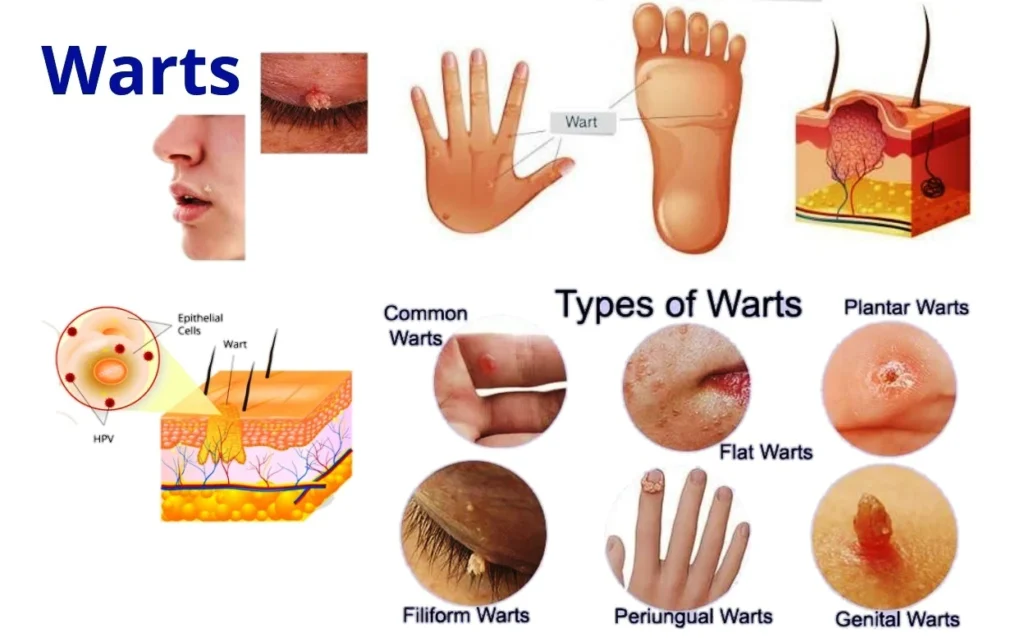Introduction
A common skin condition brought on by the human papillomavirus is warts (HPV). These are benign growths that can develop anywhere on the body, such as the hands, feet, and face are where they most frequently manifest. Also usual are anal warts and genital warts. Although warts are mostly painless, they can be ugly and uncomfortable. Through our London-based Harley Street Dermatology Clinic, you may now conveniently obtain the best same day wart removal consultation and treatment techniques and safe wart removal. The most typical types of cluster warts, genital warts and general wart removal options offered at our London dermatology clinic in Harley Street will be covered by Revitalise London in this blog.
Different types of Warts
Common Warts:
The most typical kind of warts are known as verruca vulgaris or common warts. They frequently manifest as hand warts, finger warts, and warts around the nails. Small, elevated, and rough in texture, common warts are. They could have surface blood vessels that appear as little, black spots. Finger Wart Removal, Hand Wart Removal and Nail Wart Removal is most effective through Treatments wart removal excisions. At Revitalise London Dermatology Clinic, we specialise in painless wart excisions.
Warts that develop on the soles of the feet are called plantar warts. They have a rough surface, are firm and flat. Walking with warts on the foot may be painful or uncomfortable, especially if they are on pressure points.
Flat Wart:
Flat warts, often referred to as verruca plana, are tiny, flat warts that appear in clusters on the face, neck, hands, and legs. Cluster Warts are typically flesh-colored or slightly pink and may be slightly raised.
Filiform Warts:
Long and thin warts on the face, neck, and eyelids will likely be filiform warts . They may be flesh-colored or slightly darker than the surrounding skin, and they have a thread-like appearance.
Treatment Solutions:
Topical Wart Removal Treatments
Warts may respond well to over-the-counter topical remedies such salicylic acid. These remedies function by liquifying the skin and dissolving the wart tissue. The wart may, however, not totally go away for a few weeks or months.
Cryotherapy Wart Removal:
Using liquid nitrogen to freeze the wart is known as cryotherapy. Although this treatment is somewhat helpful, it can also be uncomfortable and may call for repeated sessions.
Laser Wart Removal Therapy:
A high-energy laser is used in the non-invasive wart removal treatment laser therapy to burn away the wart tissue. This can be an effective and generally well managed option
Treatments Removal of Warts:
The wart may need to be Treatmentsly removed in some circumstances. The wart may need to be removed by being cut or scraped, or the wart tissue may need to be burned using electroProcedure. A highly efficient way to stop the spread of cluster warts or genital warts is through Treatments excision.
Conclusion
Warts are a frequent skin issue that can be troublesome and unpleasant. Nonetheless, there are a number of potential therapies for Wart Removal treatments in London, including topical medications, cryotherapy wart removal, laser wart removal therapy, and Treatments wart removal. It is crucial that Revitalise London Dermatology Clinic connects you to a London dermatologist on Harley Street if you have warts that are bothering you or raising concerns so they can decide on the best course of treatment for you. For all of your dermatology needs, turn to Revitalise London Dermatology Clinic.

